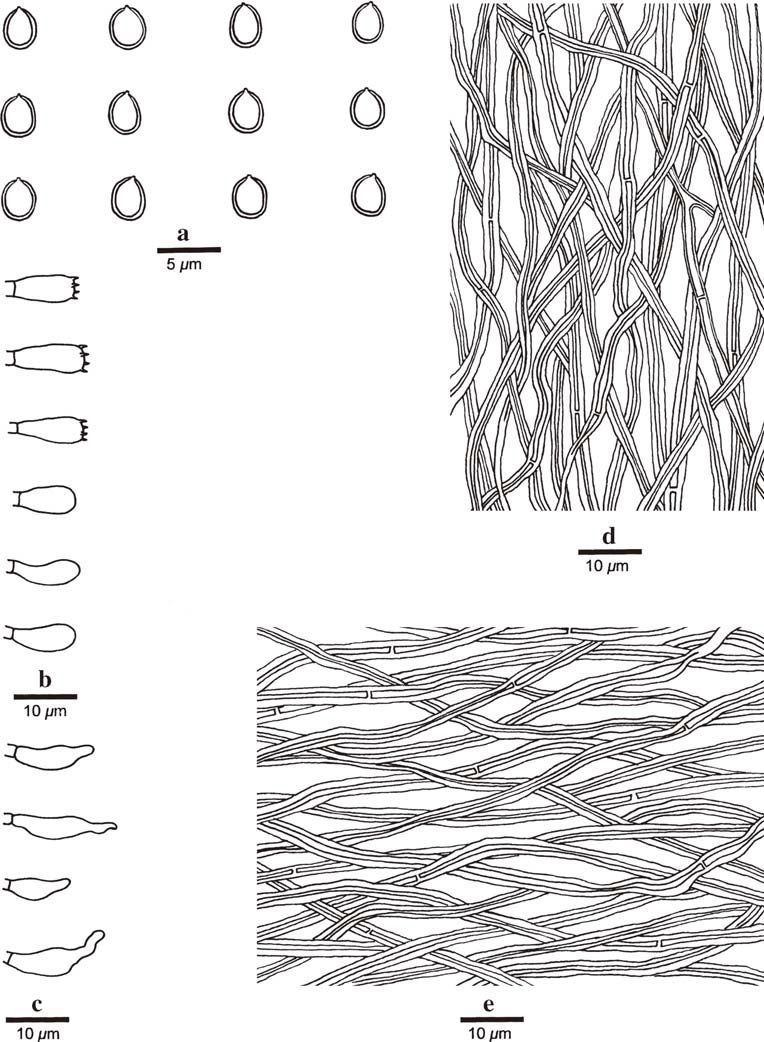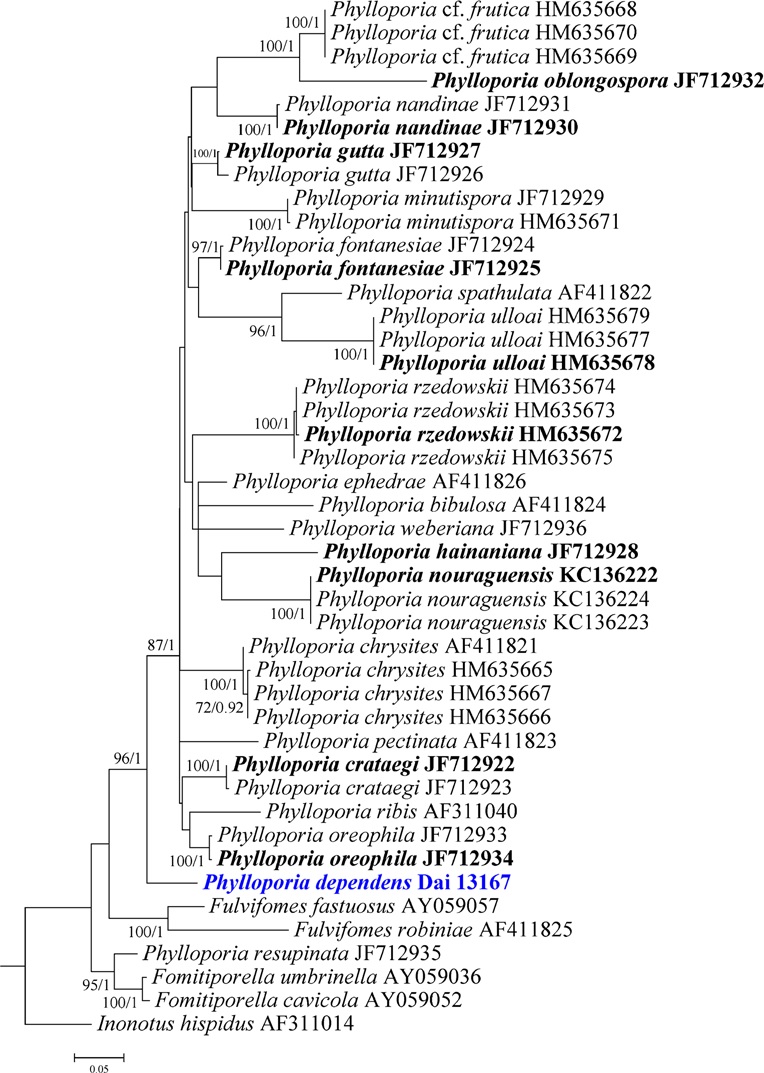Phylloporia dependens Y.C. Dai
Index Fungorum number: IF551014 Facesoffungi number: FoF 00556
Etymology: referring to the hanging down growing habit.
Holotype: BJFC013379 Basidiocarps perennial, pileate to pendent, corky and without odour or taste when fresh, becoming woody hard up on?drying. Pilei projecting up to 5 cm, 4 cm wide and 5 cm thick at base. Pileal surface vinaceous brown to black when fresh and dry, narrowly sulcate, glabrous; margin obtuse, vinaceous brown to brown. Pore surface cream-brown to pale brown when fresh, buff-yellow to cinnamon-buff when dry, more or less glancing; margin buff-yellow, narrow to almost lacking; pores circular or angular, 7–9 per mm; dissepiments thin, entire. Context yellowish-brown to cinnamon, corky, up to 1 mm thick. Tubes cinnamon, slightly darker than pore surface, up to 49mm long. Hyphal system monomitic; generative hyphae with simple septa; neither amyloid nor dextrinoid, acyanophilous; tissue darkening but otherwise unchanged in KOH. Contextual hyphae pale yellowish brown to yellowish brown, thick-walled with a wide to narrow lumen, occasionally collapsed, rarely branched, regularly arranged, 2.4–3.1μm diam. Tramal hyphae pale yellowish brown to yellowish brown, thick-walled with a wide to narrow lumen, occasionally branched, straight, subparallel along the tubes, 2–3μm diam. Setae absent; cystidia absent; cystidioles present, fusoid, hyaline, thin-walled, 9–17×3–4.5μm; basidia more or less barrel-shaped, with four sterigmata and a simple septumat the base, 9–12×4–5μm; basidioles mostly pear-shaped, slightly smaller than basidia. Crystals polyhedric, frequently present among trama and subhymenium. Basidiospores broadly ellipsoid, yellowish, thick-walled, usually collapsed when mature, neither amyloid nor dextrinoid, moderately cyanophilous, 3–3.4×2.7–3 (–3.1) μm, L=3.16μm, W=2.9μm, Q=1.09 (n=30/1).
Material examined: CHINA, Yunnan Province, Ruili, Moli Tropical Rainforest, on rotten angiospermstump, 1 November 2012, Dai 13167 (BJFC013379, holotype; GenBank LSU: KP698746; IFP 019122, isotype).
Notes: Phylloporia verae-crucis (Berk. ex Sacc.) Ryvarden has similar pores (7–9 per mm) to P. dependens, but has larger basidiospores (4–4.5×3–3.5μm, Wagner and Fischer 2002). In addition, it lives on ground over buried wood, and occurs in South America (Wagner and Fischer 2002). Phylloporia was well studied in China, and 13 species were recorded in the county besides the new species (Dai 2010, 2012; Zhou and Dai 2012; Zhou 2013). Phylloporia dependens differs from all the existed species in the genus by its hanging down growing habit. In addition, phylogenetic analysis based on nLSU region indicates that P. dependens belonged to Phylloporia, and occupied a distinct lineage with strong support (96 % BS and1 BPP). So the morphological and molecular evidence confirmed the placement of the new species.

Phylloporia dependens (holotype) microscopic structures a Basidiospores. b Basidia and basidioles. c Cystidioles. d Hyphae in trama. e Hyphae in context

Phylogram generated from Maximum Likelihood (RAxML) analysis based on LSU sequence data. Maximum likelihood bootstrap support values greater than 50 % and Bayesian posterior probabilities greater than 0.90 are indicated above the nodes, new species are in blue and species for which obtained sequences are based on type material have names in bold. The tree is rooted with Inonotus hispidus
Read more: http://link.springer.com/article/10.1007/s13225-015-0324-y

